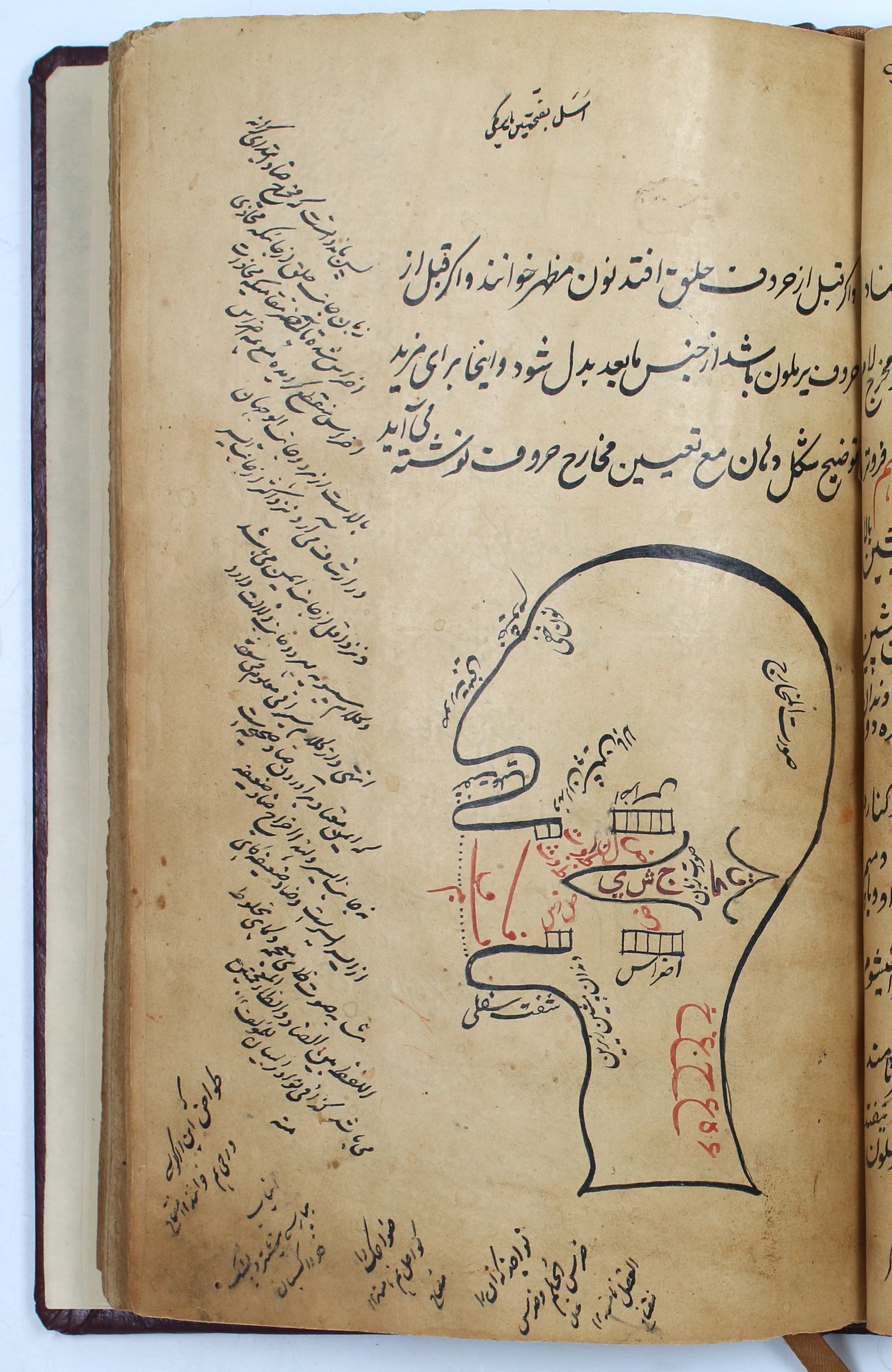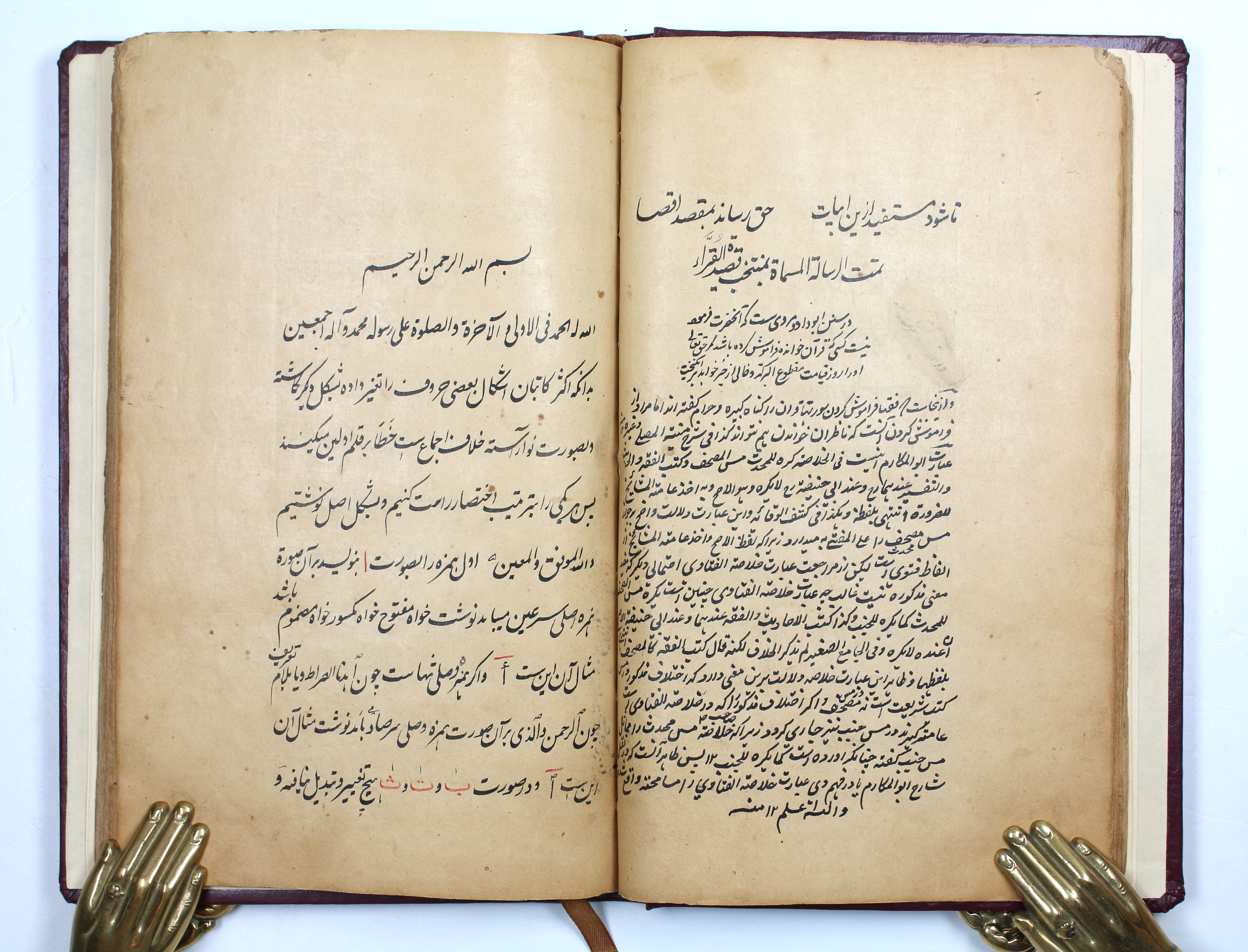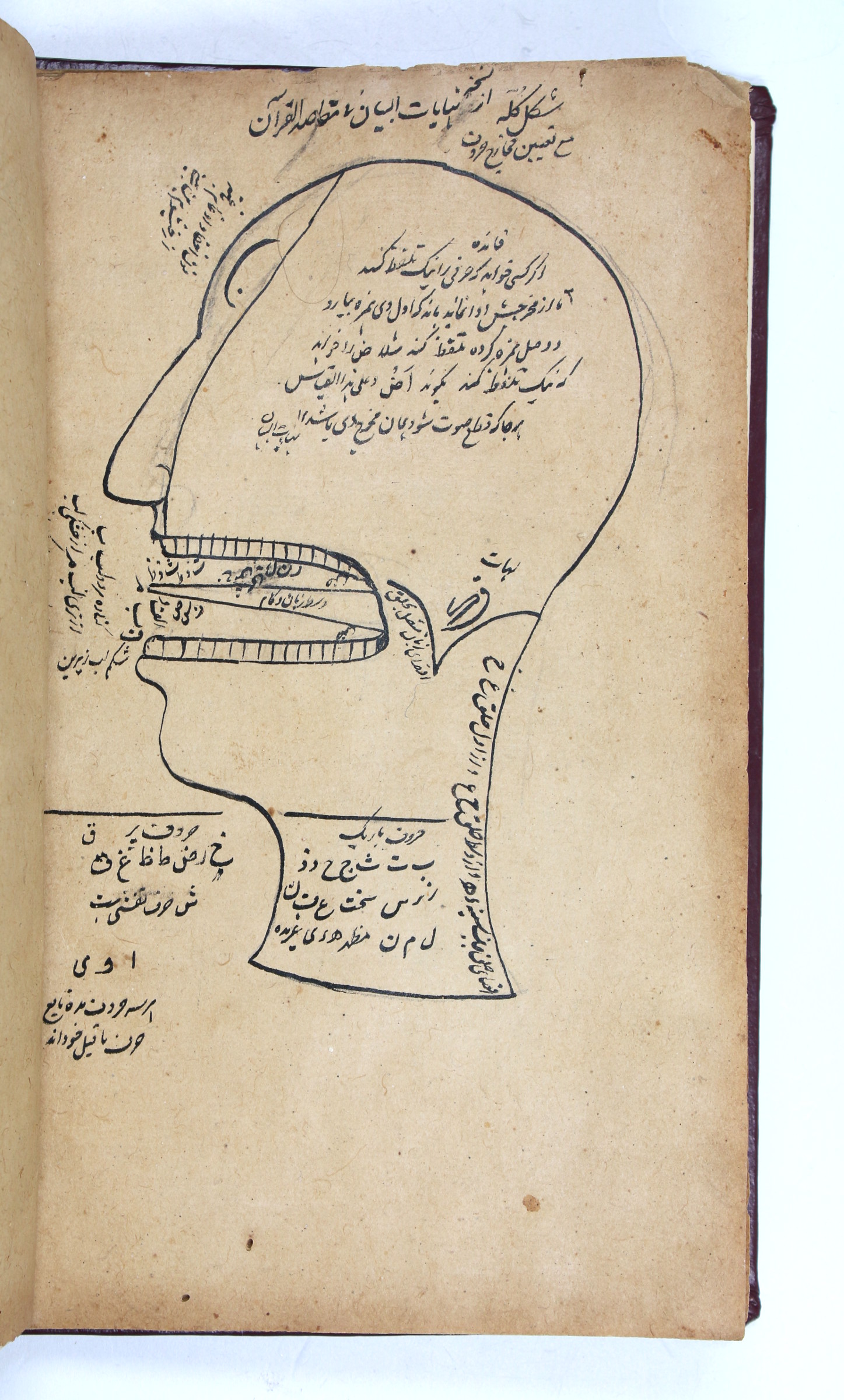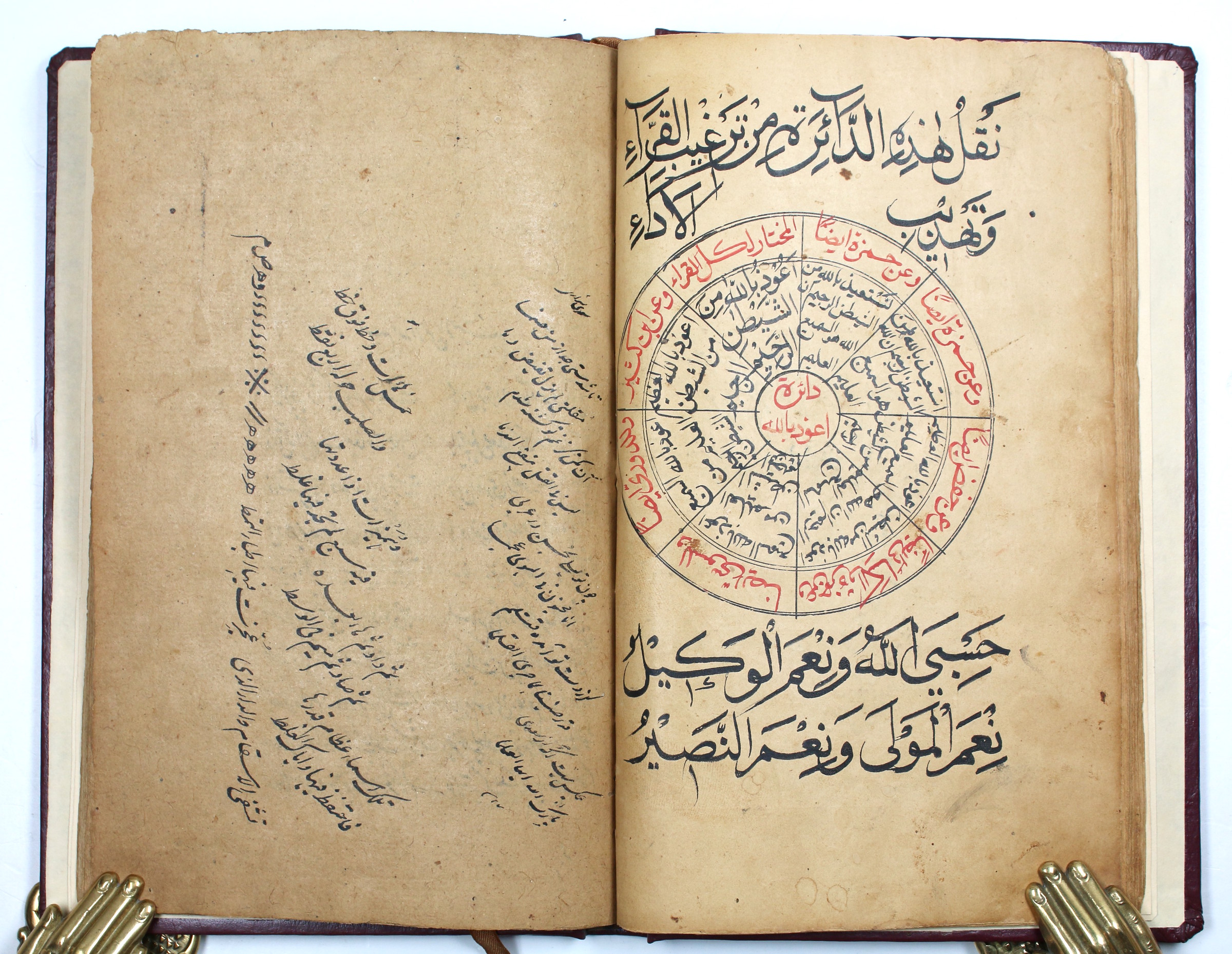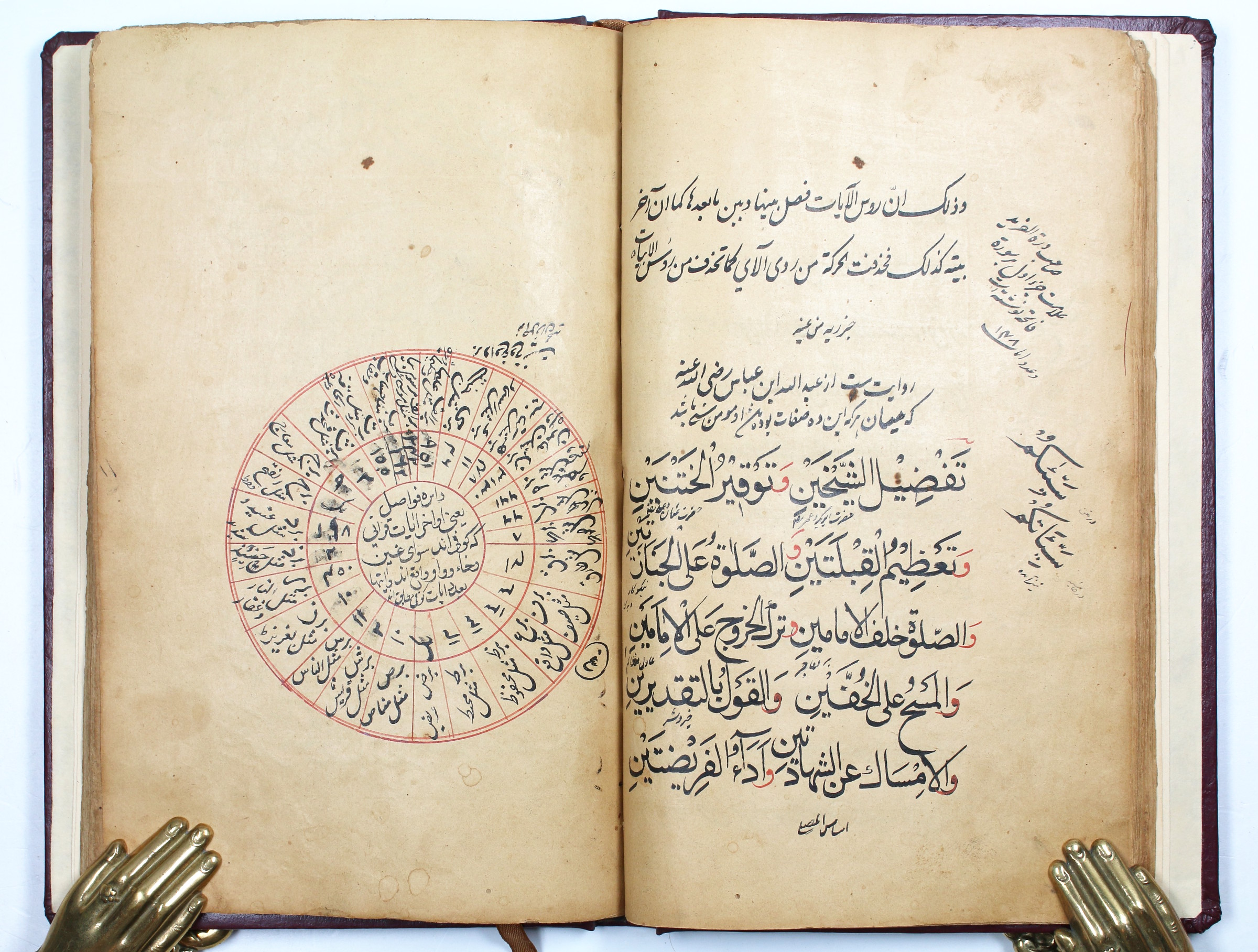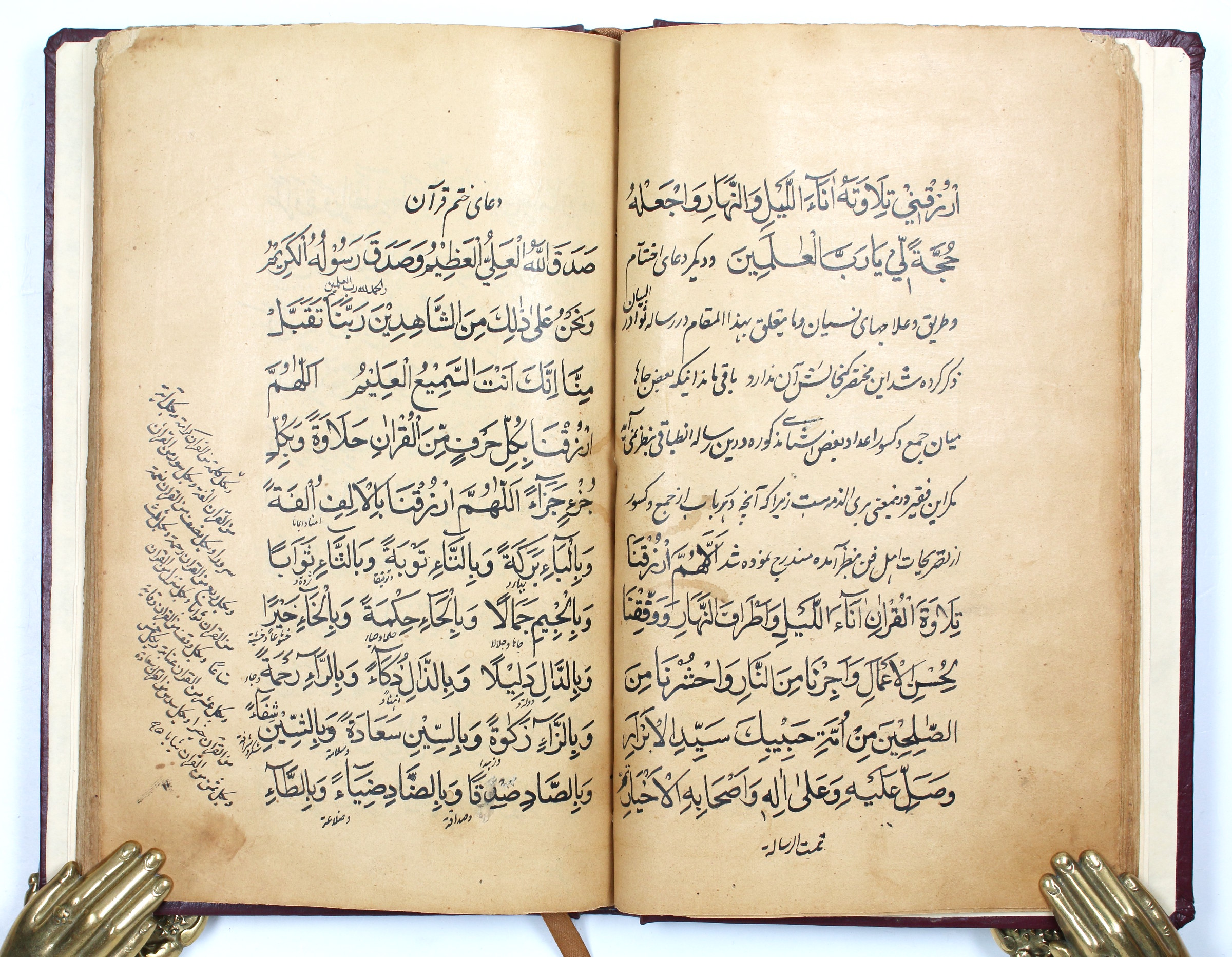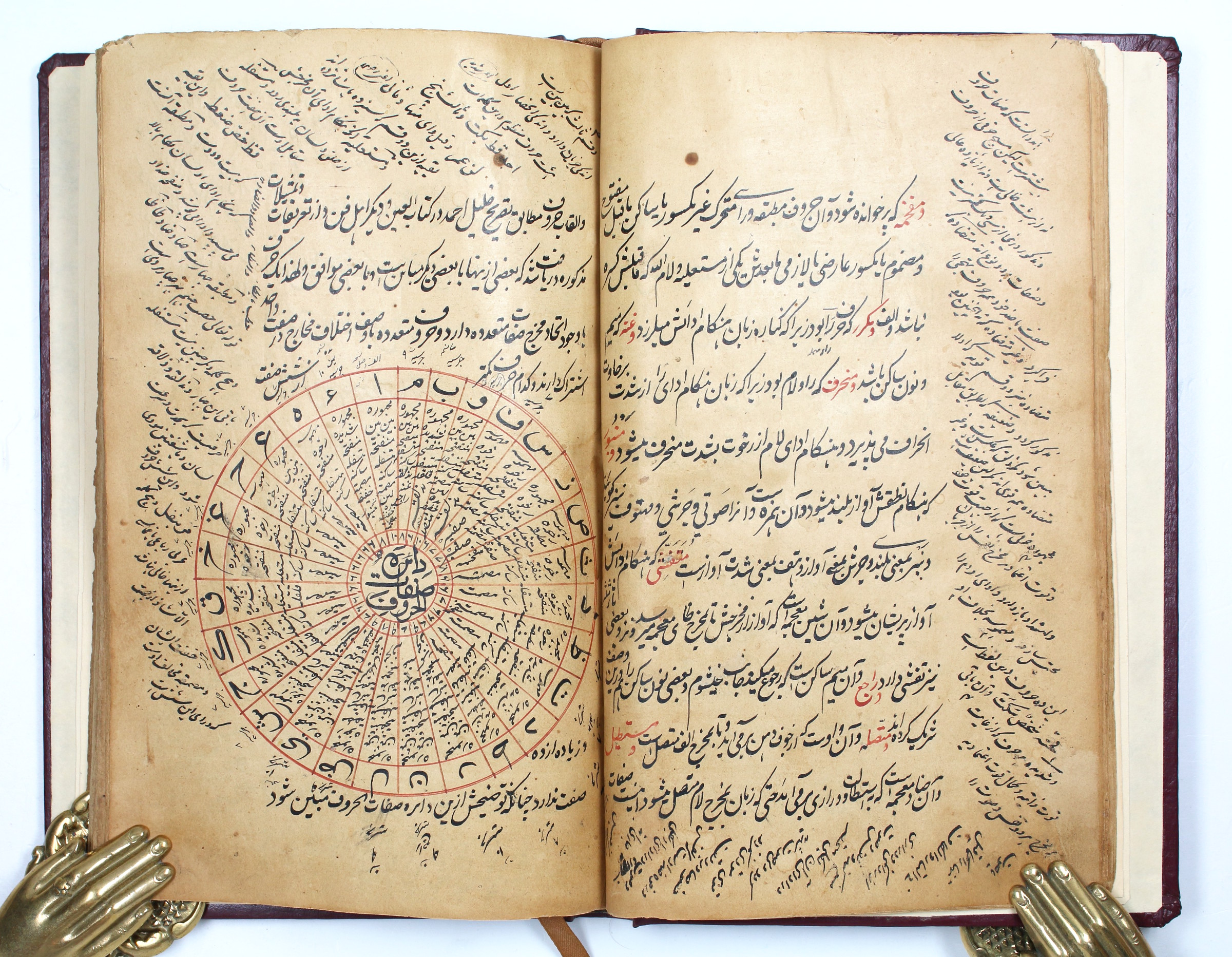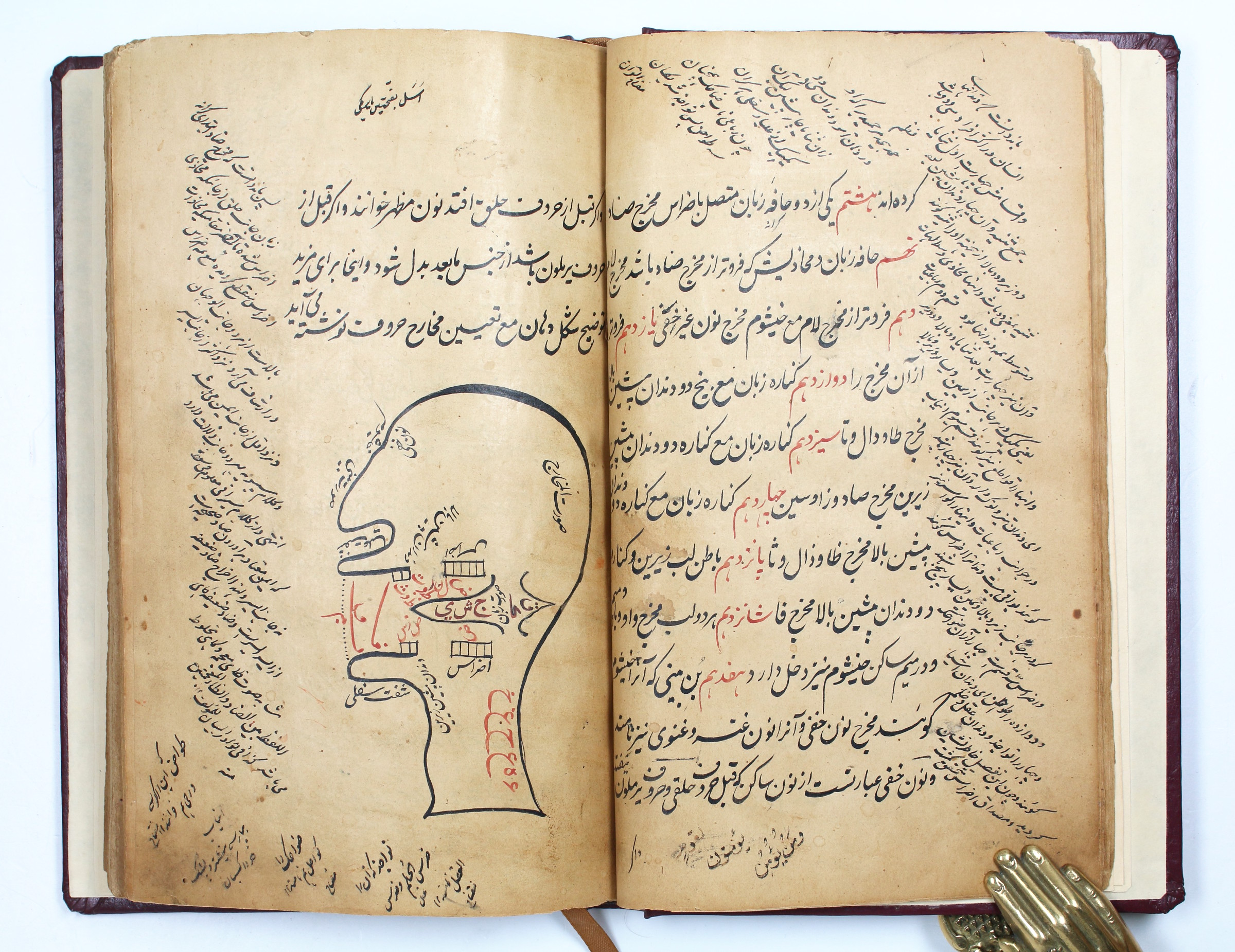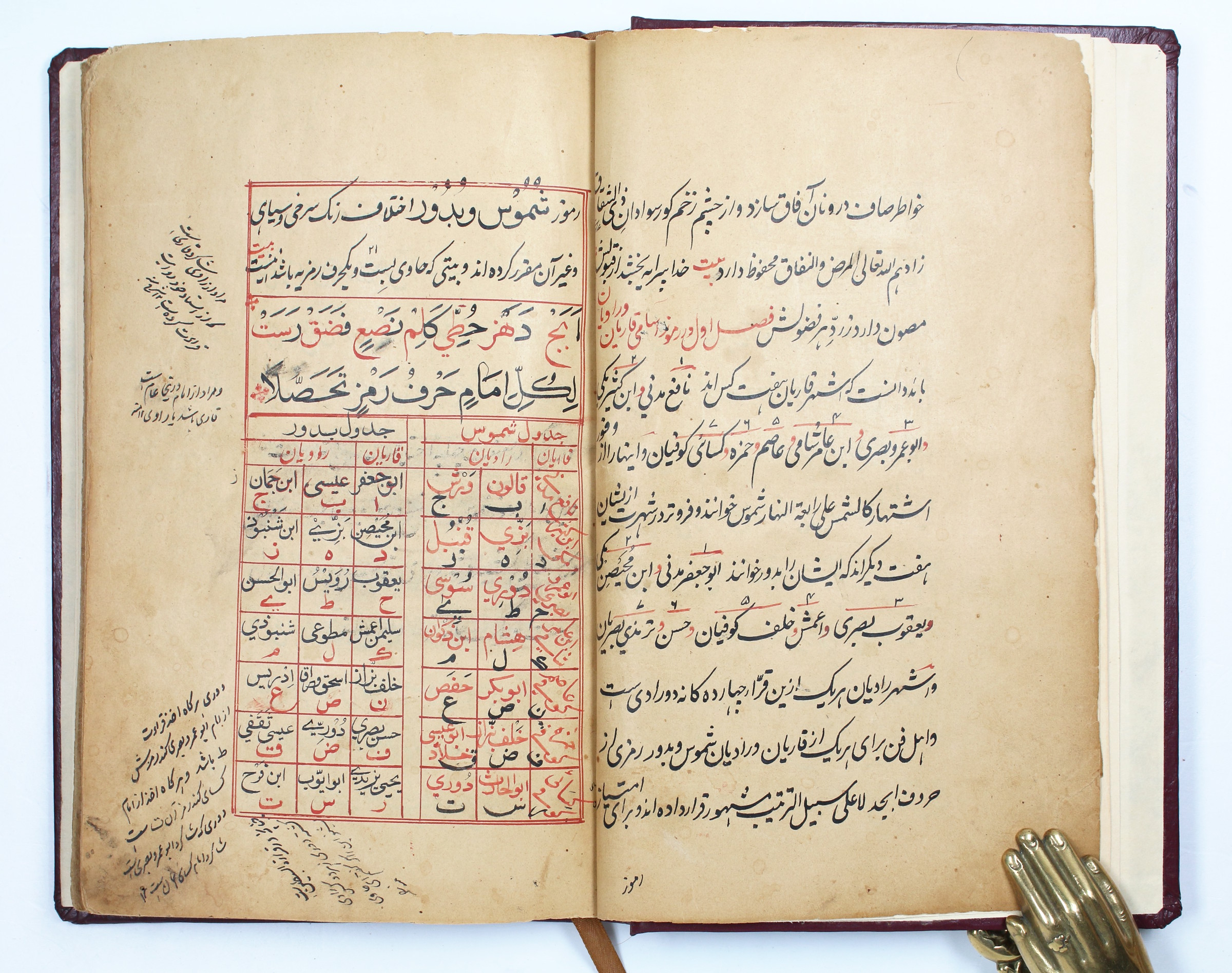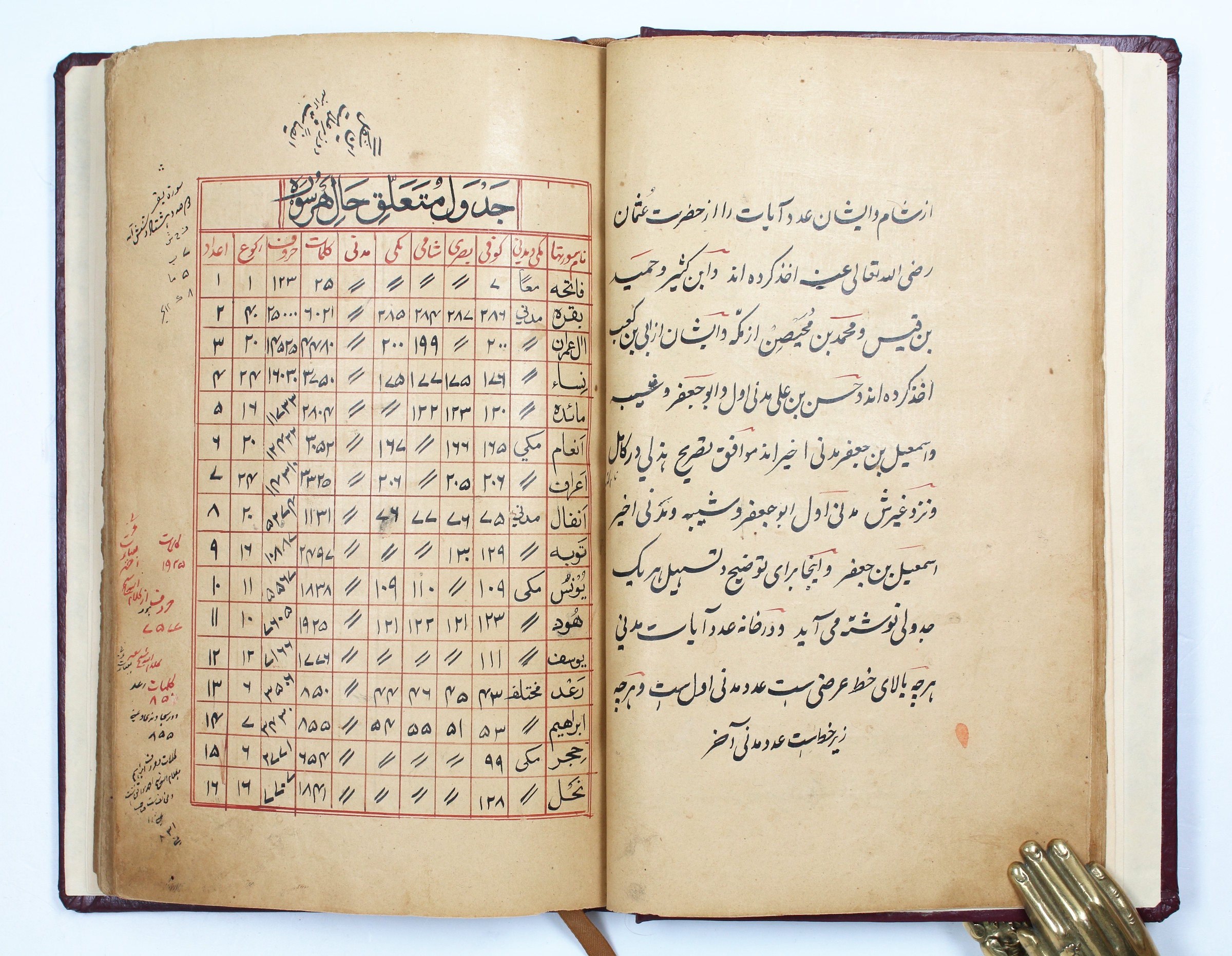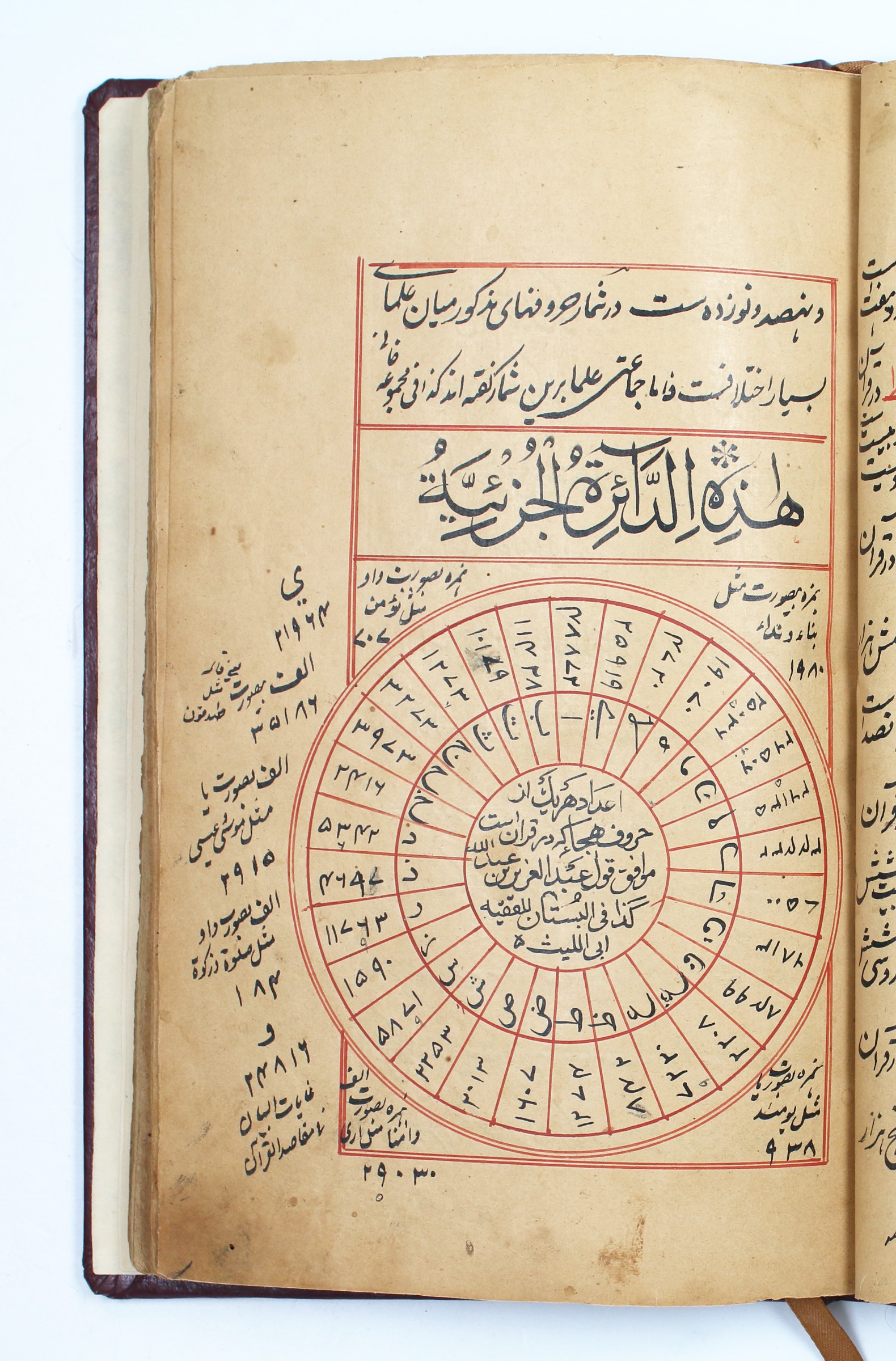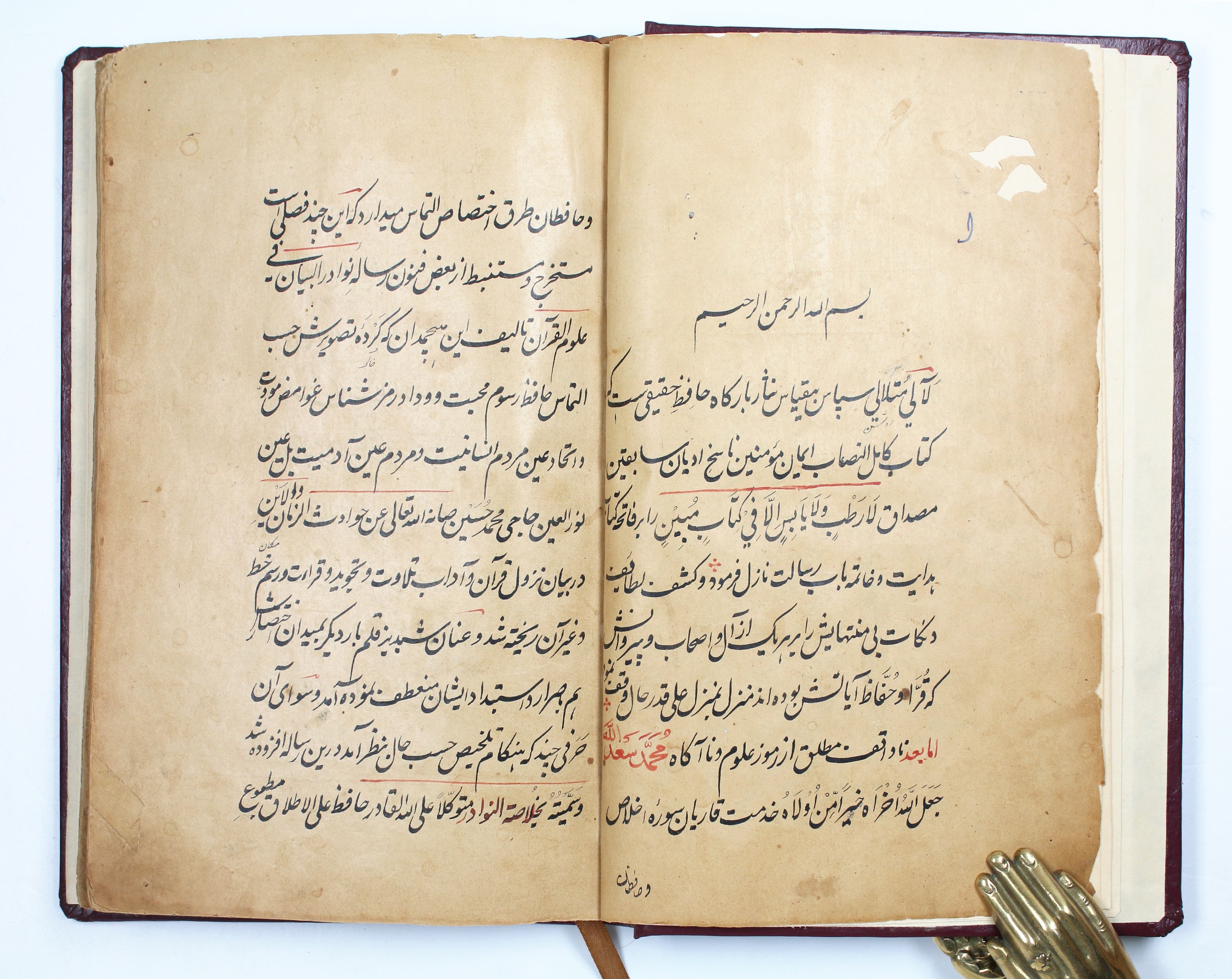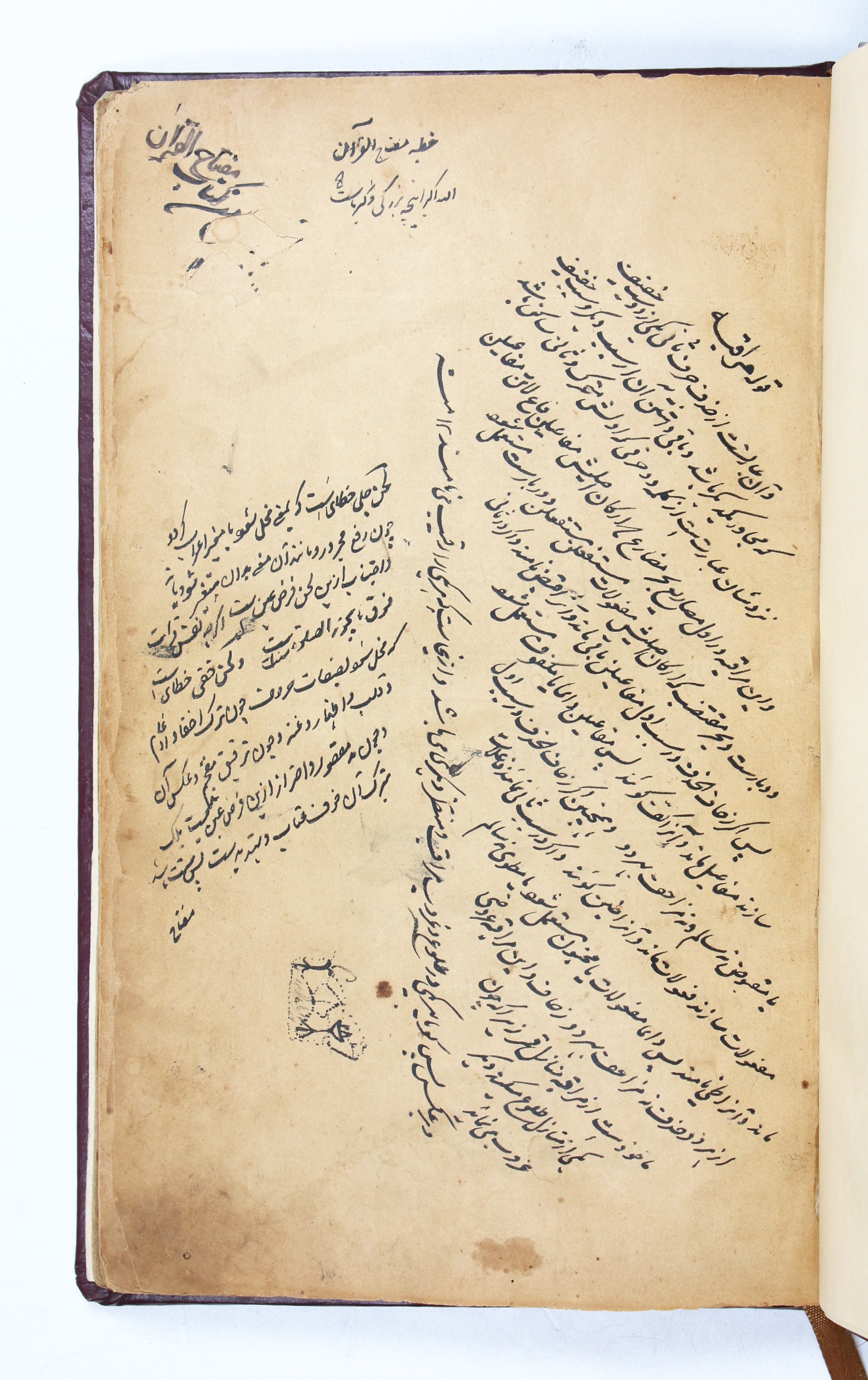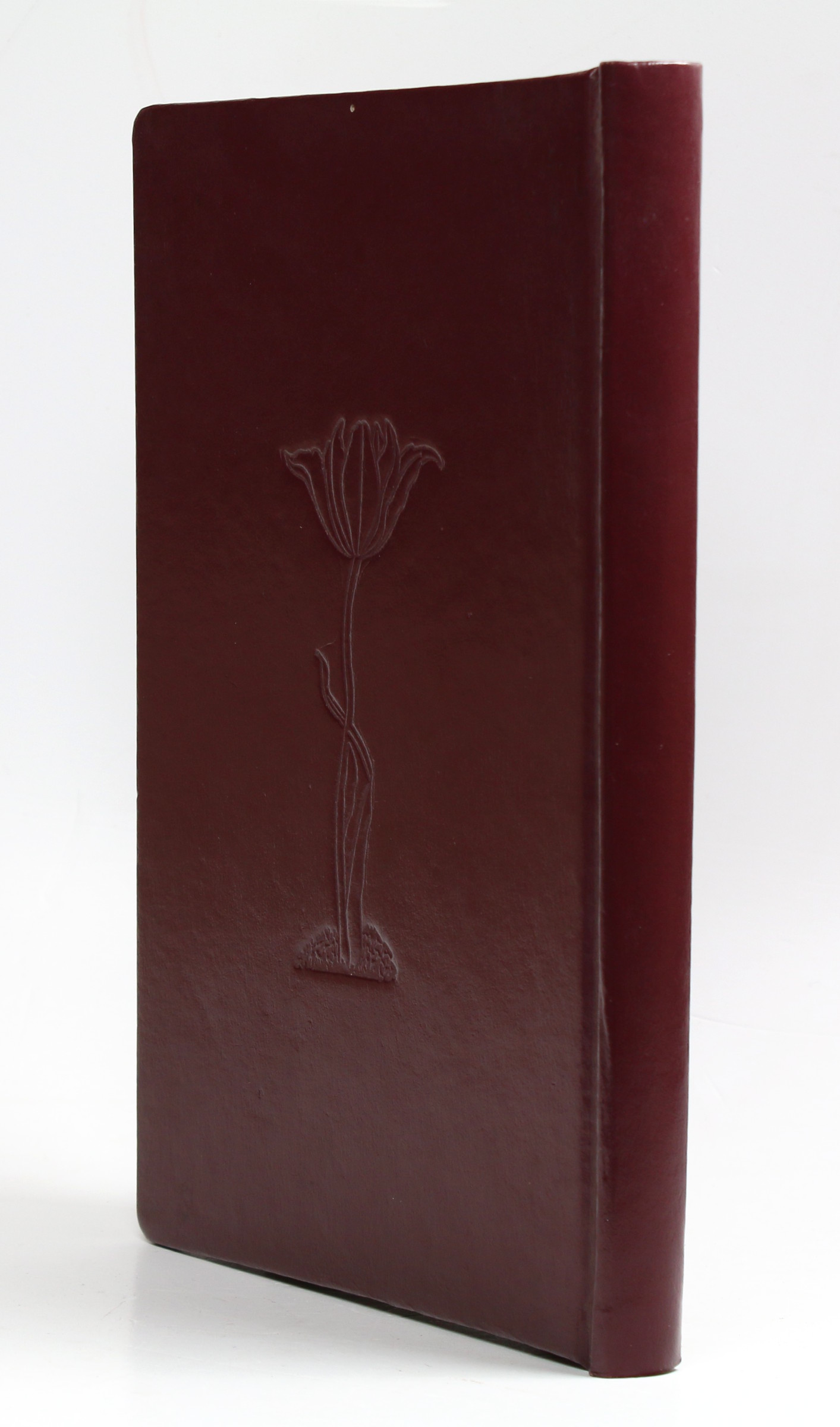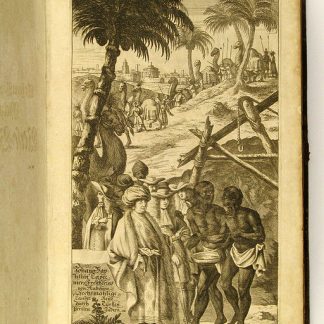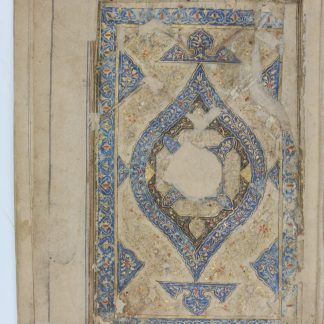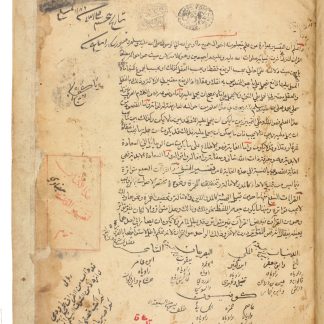Makharij Al-Huroof: Persian phonetic diagrams
Khulasat al-Nawadir.
8vo (155 x 240 mm). 29 ff. Persian manuscript on polished paper. With 6 detailed diagrams and charts, including a diagram of the Makharij Al-Huroof.
(Bound with) II: Several poems and short texts, followed by Miftah al-Qur'an [The Key of the Quran]. Northern India, 1275 H [= 1858 CE]. 38 ff. With several additional diagrams. Persian manuscript on paper. 21st century burgundy calf with floral decoration in blind.
An Indo-Persian manuscript on recitation featuring two striking illustrations of the Makharij al-Huroof ("the points of articulation for [Arabic] letters"): a sketched cross-section of a head with mouth, throat and tongue in the process of speech, labelled to show how the sound of each letter is to be formed physically. These early phonetic diagrams illustrate a manuscript which explains Tajwid, the rules to be observed when reciting the Qur'an aloud. Since Qur'an recitation was and remains an important practice for devout Muslims, Tajwid texts are found across the Muslim world. This Persian manuscript from 19th century India is notable for its diagrams.
The present manuscript contains two treatises and a handful of smaller texts on Tajwid, the first being "Khula'at al-nawadir", an abridged version of a longer text, which provides a helpful table of the names of the different standard recitations and their narrators. It is illustrated with the first Makharij al-Huroof and several circular diagrams displaying the attributes of each Arabic letter, or providing helpful details about each chapter of the Quran: where they were revealed, number of words, verses, letters, etc.
Bound alongside this treatise is the "Miftah al-Qur'an" (The Key of the Quran). Also a treatise on Tajwid and recitation, the Miftah ends again with the recognizable diagram of a face and mouth in the process of Arabic speech, labelled in Persian.
Between these two main treatises are bound several interesting and illustrated shorter texts. First are two leaves with the prayer for completing the recitation of the Qur'an, followed by a poem called "Muntakhab Qasidat al-Quraa'" (Selections from the Poem of the Reciters). These are followed by an essay discussing the proper way of writing Arabic letters and some interesting differences of opinion regarding certain Tajwid rules; its final leaf contains a circular diagram showing the number of times each letter has appeared as the last letter of a verse in the Qur'an, and on the verso is a circular diagram showing the variations of isti'aathah (a phrase recited to seek refuge from the devil before recitation).
Leaves gently toned, a few minor hints of edgewear; quite well preserved.

